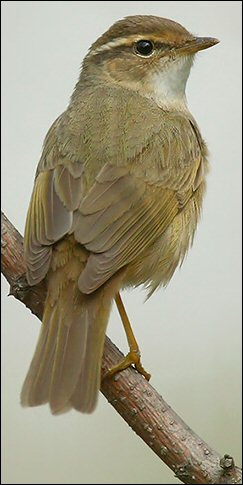Shandong Province

Birding Shandong
Shandong is a coastal province of eastern People’s Republic of China. Shandong’s name is literally translated as: east of the mountain, which refers to the province’s location east of the Taihang Mountains. The province is located in the lower reaches of the Huang He (Yellow River) and extends out to sea in the form of the Shandong Peninsula. Shandong borders the Bohai Bay to the north, Hebei to the northwest, Henan to the west, Jiangsu to the south, and the Yellow Sea to the southeast; it also shares a very short border with Anhui, between Henan and Jiangsu.Shandong is mostly flat in terrain. The northwestern, western, and southwestern parts of the province are all part of the vast North China Plain. The centre of the province is more mountainous, with the Taishan Mountains, Lushan Mountains, and Mengshan Mountains being the most prominent. The east of the province is the hilly Shandong Peninsula extending into the sea; it separates Bohai Sea in the northwest from the Yellow Sea to the east and south. The highest peak of Shandong is Jade Emperor Peak, with a height of 1545 m.The Yellow River passes through Shandong’s western areas, entering the sea along Shandong’s northern coast; in its traversal of Shandong it flows on a levee, higher than the surrounding land, and dividing western Shandong into the Hai He watershed in the north and the Huai He watershed in the south. The Grand Canal of China enters Shandong from the northwest and leaves on the southwest. Lake Weishan is the largest lake of the province. Shandong’s coastline is 3000 km long. Shandong Peninsula has a rocky coastline with cliffs, bays, and islands; the large Laizhou Bay, the southernmost of the three bays of Bohai Sea, is found to the north, between Dongying and Penglai; Jiaozhou Bay, which is much smaller, is found to the south, next to Qingdao. The Miaodao Islands extend northwards from the northern coast of the peninsula.Shandong has a temperate climate, with moist summers and dry, cold winters. Average temperatures are -5 to 1°C in January and 24 to 28°C in July. Annual precipitation is 550 to 950 mm.With Jinan serving as the province’s economic and cultural centre, the province’s economic prowess has led to the development of modern coastal cities located at Qingdao, Weihai, and Yantai.
-
Wikipedia
GNU Free Documentation License
http://en.wikipedia.org/wiki/Shandong
-
Number of bird species: 408
(As at August 2018)
- But one 'breeding endemic': Red-billed Starling Spodiopsar sericeus
-
Dong Ying Bird Watching Society
InformationDongYing Bird Watching Society (DYBWS) was formed by journalists and reserve staff in August 2004, and it was formally established on 6 November 2004. The DYBWS is now a voluntary, professional, non-profit and community-base organization -
Dong Ying Bird Watching Society
WebsiteAddress: Room 305, Management Office, Yellow River Delta National Nature Reserve, Shangdong, Postal Code F257091Contact no.: 13563388846 Nature Reserve 0546-8306700 Office Fax: 0546-8307752 E-mail: bbsbird@tom.com; kaishan9@hotmail.com Website: www.hhkgn.org Contact person Dan Kai Website in Chinese only
-
NNR Shandong Yellow River Delta
InformationSatellite ViewThe reserve is now home to 1,626 types of wild animals, including 368 kinds of birds. There are 12 species of birds in the top national protection class and 51 species in the second. First-class national protection birds include the red-crowned crane and the white-headed crane. Second-class national protection birds include the grey crane, whooper swan and mandarin duck. Millions of birds look for food and shelter in the area as they pass through during migration seasons every year. Domestic and foreign experts call the reserve the birds’ international airport.
-
Alpine Birding
Tour OperatorYou want to go birding in your own way, looking for your own target birds, birding in your own pace. We can help you to achieve that, having a birding trip as you wish. -
China Bird Tours
Tour Operator

